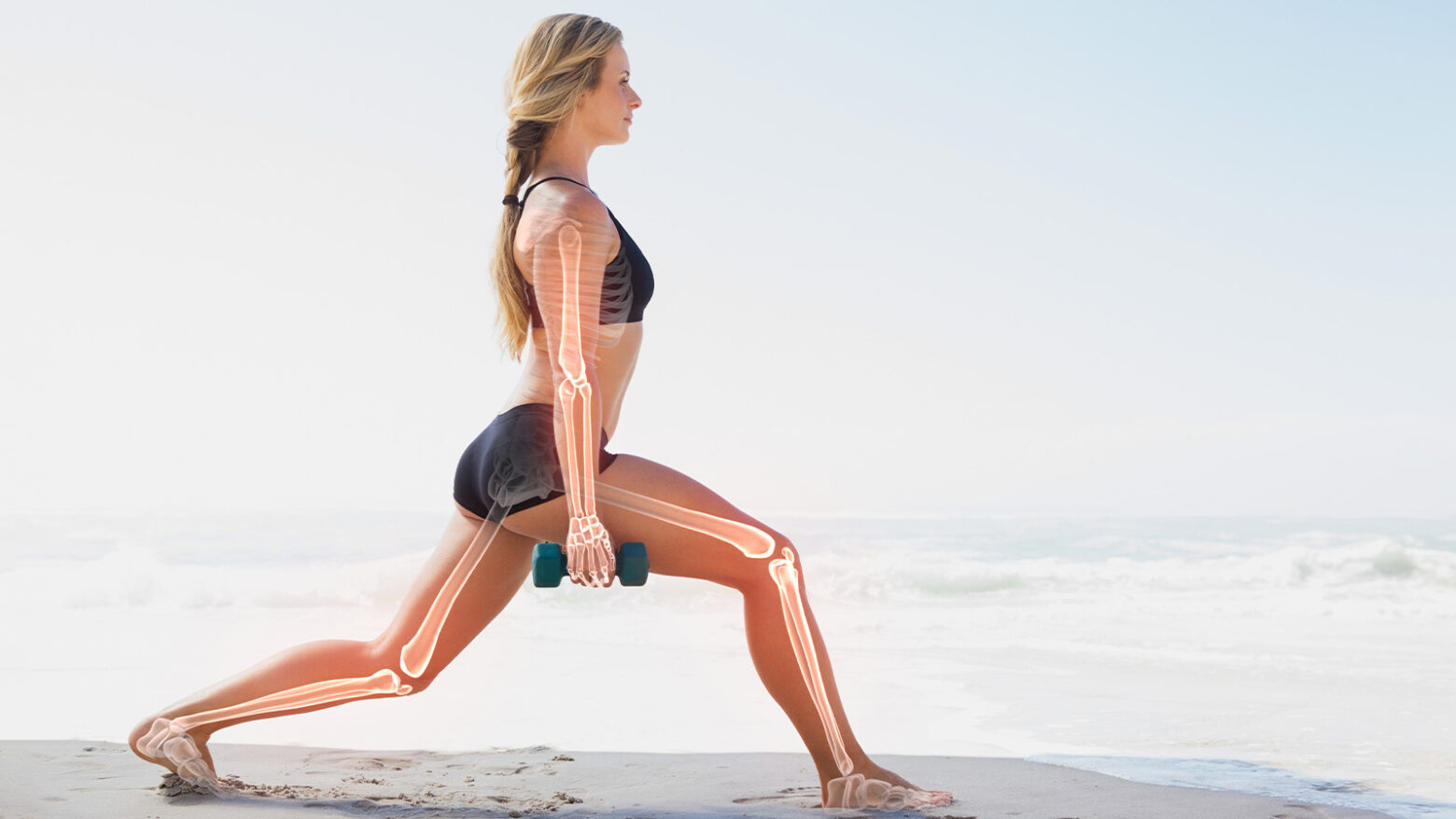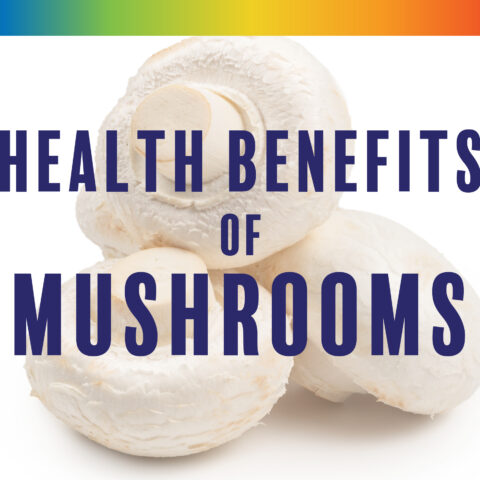The Critical Role Protein Plays in Bone Health

Osteoporosis is a bone disease impacting nearly 30 million Americans each year. Women are four times more likely to suffer from this disease than men. [1,2]
One of the most devastating consequences of osteoporosis is the increased rate of hip fractures from falls. Annually, approximately 1.5 million hip fractures occur in the elderly population. [3] The consequences of a hip fracture are pain, loss of independence, and mobility as well as a decrease in quality of life. [4]
Whenever the strength of our bones is discussed, most people immediately think about calcium. Rightly so, as 99 percent of your body’s calcium is contained in teeth and bone. However, a lack of calcium is not the only cause of osteoporosis. Dr. Robert Heaney said it best:
“Osteoporosis is a multifactorial disorder in which the skeleton is sufficiently fragile so that it fractures when exposed to the mechanical forces and accidents that are a routine part of ordinary living. Nutrition is only one of several factors that influence bone strength.” [5]
According to the Surgeon General [6], there are several factors aside from calcium intake that may affect bone health:
- Genetics
- Lifestyle factors, such as nutrition and physical activity
- Vitamin D
- Maintaining a healthy weight
- Muscle strengthening and proprioceptive training to prevent falls
- Amenorrhea after the onset of puberty
- Usage of medications
- Smoking and heavy alcohol consumption
High Protein and Calcium Balance
Of all the factors that contribute to osteoporosis, nutrition seems to get the most attention. Proponents for a lower protein diet argue that a high protein diet causes calcium loss and bone demineralization, which leads to osteoporosis. In particular, many will refer to calcium balance studies to “prove” protein causes a loss of calcium. [7]
What these anti-protein proponents are saying is: If you eat protein, especially animal protein, your body will eliminate calcium through urine or feces, instead of absorbing it.
This argument is based on flawed research. Let’s consider some of the methodological issues. First, the variability of fecal collections is insensitive. They do not distinguish endogenously excreted calcium (i.e. calcium that came from bones) from unabsorbed fecal calcium (calcium that was eaten and never absorbed). [8]
Another issue with some of these studies is duration. For example, a 1999 study provided evidence that a higher protein diet increased calcium excretion in women. However, the study lasted only four days. [9] As with any dietary change, the body adapts over time. Initially, there may be an increase in calcium loss but decreases with time as the body adapts. [10]
In contrast to the aforementioned studies, Zamzam et al. performed a randomized crossover design study using a sensitive radiotracer and whole-body scintillation counting methodology. While complex, this measurement technique addresses the issues in many studies explained above. This method is a more sensitive measurement of total calcium retention accounting for differences in calcium absorption, urinary and intestinal excretion, and any other routes of calcium loss. [10]
In the study, healthy postmenopausal women were randomly assigned to a controlled high-meat or low-meat diet for eight weeks. Calcium retention was not adversely affected by the high-meat diet. In fact, the data indicated calcium retention was slightly improved in the high-meat diet versus the low-meat diet. [10]
Biomarkers of bone formation—such as serum bone-specific alkaline phosphatase, osteocalcin, and IGF-1—were also not adversely impacted on the high-meat diet. Likewise, biomarkers of bone resorption—such as serum-tartrate-resistant acid phosphatase and urinary N-telopeptides—were not adversely affected on the high-meat diet. [10] This high-quality study did not back the claims that a high-protein diet will cause people to flush calcium down the toilet.
In fact, the study showed that a high protein diet may aid calcium absorption when intake is low. During the study, all subjects averaged 600 mg of calcium per day to mimic the typical intake of an American woman, which is considered low. Simply increasing protein intake from 10 percent to 20 percent was shown to increase calcium absorption when calcium intake was low. [11]
Another argument of anti-protein proponents is that a high-protein animal-based diet makes the body acidic, and the body compensates by using calcium from bone to neutralize the acidity. The pH in the blood is tightly regulated by the body. It is maintained in the range of 7.38 to 7.42. There are two main mechanisms to help regulate pH. First, the lungs can regulate pH by expiring carbon dioxide (hyperventilating will actually reduce the acidity of your blood.) Second, the kidneys can reduce the acid load by creating and excreting ammonia.
By contrast, the change in pH caused by diet is very small. A human trial showed there was only an increase of .014 pH in the blood with acid type diets. [12] The reality is that a high protein diet will not cause an increase in pH leading to leaching of calcium from bone.
Furthermore, even if an all- or mostly-meat diet lowered pH over time, The Paleo Diet® is not an all-meat diet. A proper Paleo Diet includes both animal protein and copious amounts of vegetables and fruits, both of which are alkalizing foods. The combination of protein with vegetable and fruit would maintain a healthy blood pH balance. In addition, due in part to their high potassium content, the consumption of vegetables and fruits have a benefit on bone metabolism and bone mineral density. [13,14,15]
The Impact of High Protein Intake on Bone Mineral Density
Despite the popularity of looking at calcium balance, bone mineral density (BMD) is a much better outcome variable to indicate the effect of high protein diets because it directly measures changes in bone.
The Framingham Osteoporosis study was a long-term study examining the effect of a higher protein diet on 650 subjects averaging 75 years of age. The mean average protein intake was 68 grams per day. Subjects in the lowest quartile of protein showed the greatest bone loss in the femoral neck and lumbar spine. In addition, the study found a correlation between those consuming the lowest percent of animal protein and increases in bone loss. [16]
RELATED: Plant Protein vs. Animal Protein: What’s the Difference?
A systematic review and meta-analysis study by Darling et al. provided additional evidence of the benefit of a high-protein diet. Combining the results of 61 high-quality studies, the researchers found a slight positive correlation with a high protein diet and BMD. In addition, they studied 19 randomized control trials that found a small positive impact on BMD on the lumbar spine. [17]
Further evidence from Antonio et al. has shown no deleterious effects of an ultra-high protein diet on BMD. Their study had exercise-trained women consume greater than 2.2 grams of protein per kilogram of bodyweight per day (well above the RDA for protein of 0.8 grams per kilogram.) On average the experimental group of women consumed 169 grams of protein per day for six months, compared to 91 grams per day in the control group. Despite the higher protein intake, there were no changes in bone mineral content in the body. [18]
Some would argue that no change in BMD was seen because these women exercised extensively. Therein lies an important point. Exercise is a significant factor in bone health. It’s one of the lifestyle factors that is imperative to prevent osteoporosis.
Build Muscle, Build Bone
Building muscle is critical for the prevention of osteoporosis. In order to increase the size of a muscle, the muscle must be put under a stress, such as weight bearing exercise. Similarly, the skeletal system must be stressed for it to adapt and remodel.
The skeletal and muscular systems are interlinked. In order for you to move your leg, muscles contract and shorten creating tension to the tendon, which facilitates movement. The contraction of muscles provides the strongest mechanical stresses on bone, which stimulates healthy bone turnover, greater bone density, and bone strength and microarchitecture. [19]
Muscle mass is an insurance policy to prevent injuries for contact athletes such as hockey players and American football players. Besides strengthening bone, the maintenance or hypertrophy of muscle mass acts as a protective structure. Unfortunately, as a person ages, muscle mass loss is typically in the lower limbs, which predisposes a person to fractures.
When a person begins losing bone density, but before they are diagnosed with full-blown osteoporosis, he or she is in a stage called osteopenia. There’s a similar condition in muscle called sarcopenia, or loss of muscle mass as a person ages. This loss is particularly pronounced in fast-twitch type IIb fibers and motor neurons. These fast-twitch fibers and motor neurons are responsible for quick and explosive movements, which are important to a person’s ability to react to a slippery surface or loss of balance. This is precisely the reason why sarcopenia is recognized as a key factor in fracture rates in the older population. [20]
The Bottom Line
The prevention of osteoporosis is a multi-factorial process. Lifestyle factors have a huge impact on the health of bone—even smoking and alcohol are risk factors for osteoporosis. Consuming optimal quantities of calcium, phosphorous, and vitamin D are important for the maintenance of bone.
Weight-bearing exercise is also critical to stimulate muscle mass and, in turn, stimulate healthy bone turnover. This has a functional benefit: It can prevent falls. Protein is essential for these bodily functions and plays a key role in keeping your bones healthy and strong.
References
- Looker AC, Orwoll ES, Johnston CC Jr, et al. Prevalence of low femoral bone density in older U.S. adults from NHANES III. J Bone Miner Res 1997;12:1761–8.
- Alswat KA. Gender Disparities in Osteoporosis. J Clin Med Res. 2017 May;9(5):382-387.
- National Research Council. Diet and health. Washington, DC: National Academy Press, 1989.
- Amarilla-Donoso FJ, López-Espuela F, Roncero-Martín R, Leal-Hernandez O, Puerto-Parejo LM, Aliaga-Vera I, Toribio-Felipe R, Lavado-García JM. Quality of life in elderly people after a hip fracture: a prospective study. Health and Quality of Life Outcomes 2020;18:71.
- Heaney RP. Nutritional Factors in Osteoporosis. Ann Rev Nutr. 1993;13:287-316.
- Bone Health and Osteoporosis: A Report of the Surgeon General. Office of the Surgeon General (US) Rockville (MD). 2004
- Schuette, SA, Zemel MB, Linkswiler HM. Studies on the mechanism of protein-induced hypercalcuria in older men and women. J Nutr. 1980;110:305-315.
- Kerstetter JE, Allen LH. Protein intake and calcium homeostasis. Adv Nutr Res. 1994;9:167-81.
- Kerstetter JE, Mitnick ME, Gundberg CM, Caseria DM, Ellison AF, Carpenter TO, Insogna KL. Changes in bone turnover in young women consuming different levels of dietary protein. J Clin Endocrinol. 1999;84:1052-1055.
- Zamzam KR, LuAnn J, Glenn IL, Hunt JR. Controlled High Meat Diets Do Not Affect Calcium Retention or Indices of Bone Status in Healthy Postmenopausal Women. J Nutri. 2003 April;133(4):1020-1026.
- Hunt JR, LuAnn KJ, Fariba Roughead ZK. Dietary protein and calcium interact to influence calcium retention: a controlled feeding study. Am J Clin Nutr. 2009;89:1357-65.
- Buclin T, Cosma M, Appenzeller M, Jacquet AF, Décosterd LA, Biollaz J, Burckhardt P. Diet acids and alkalis influence calcium retention in bone. Osteoporos Int. 2001;12(6):493-9.
- Muhibauer RC. Effect of vegetables on bone metabolism. Nature 1999 ;401:343-4.
- Tucker KL, Hannan MT, Chen H,Cupples LA, Wilson PW, Keil DP. Potassium, magnesium, and fruit and vegetable intakes are associated with greater bone mineral density in elderly men and women. Am J Clin Nutr 1999;69:727-6.
- New SA, Robins SP, Campbell MK, Martin JC, Garton MJ, Bolton-Smith C, Grubb DA, Lee SJ, Reid DM. Dietary influences on bone mass and bone metabolism: further evidence of a positive link between fruit and vegetable consumption and bone health? Am J Clin Nutr. 2000 Jan;71(1):142-51.
- Hannan MT, Tucker KL, Dawson-Hughes B, Cupples LA, Felson DT, Kiel DP. Effect of dietary protein on bone loss in elderly men and women: the Framingham Osteoporosis Study. 2000. J Bone Miner Res;15:2504–2512
- Darling AL, Millward DJ, Torgerson DJ, et al. Dietary protein and bone health: a systematic review and meta-analysis. Am J Clin Nutr. 2009;90:1674–1692.
- Antonio J, Ellerbroek A, Evans C, Silver T, Peacock CA. High protein consumption in trained women: bad to the bone? J Int Soc Sports Nutr. 2018;15:6.
- Cederholm T, Cruz-Jentoft AJ, Maggi S. Sarcopenia and fragility fractures. Eur J Phys Rehabil Med. 2013 Feb; 49(1):111-7.
- Nowson C, O’Connell S. Protein Requirements and Recommendations for Older People: A Review. Nutrients. 2015 Aug;7(8):6874-6899.




